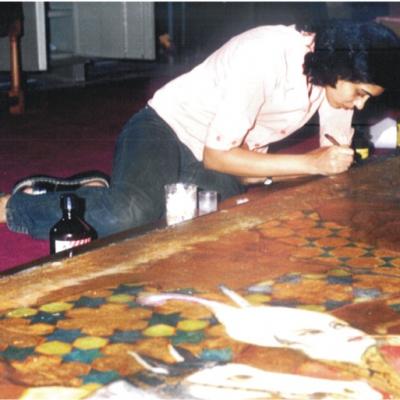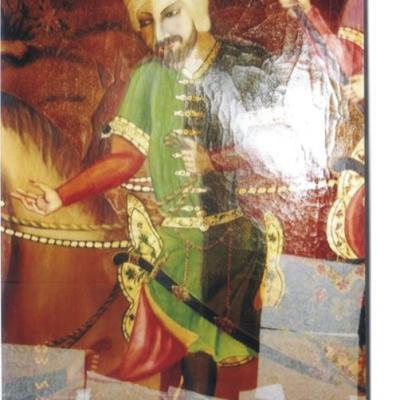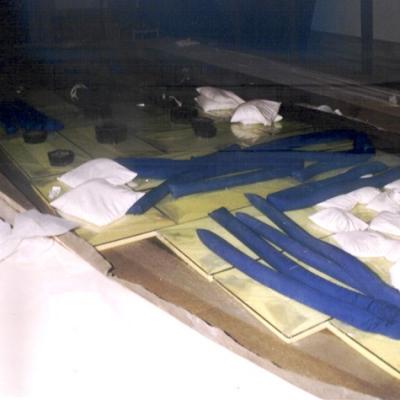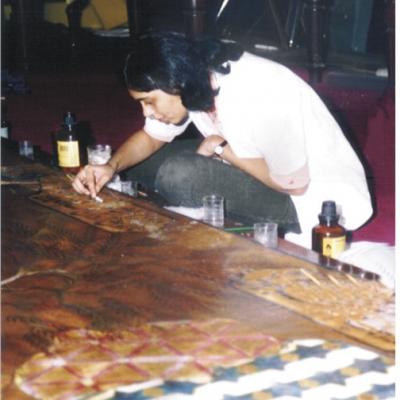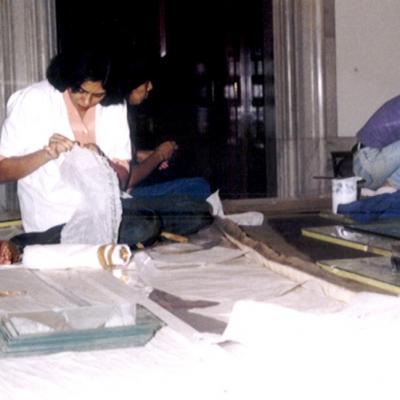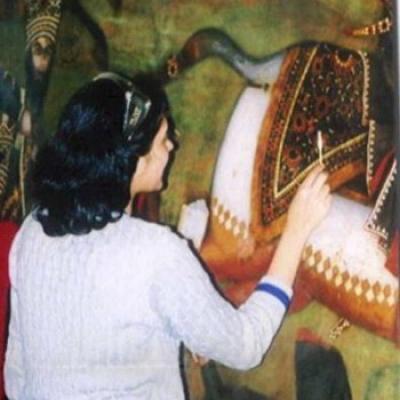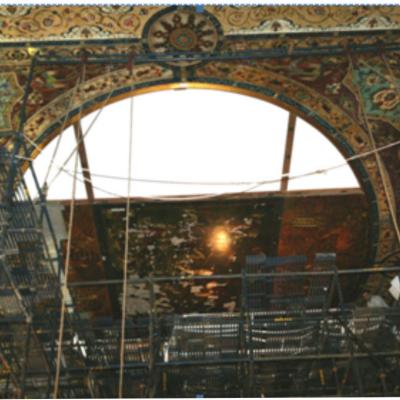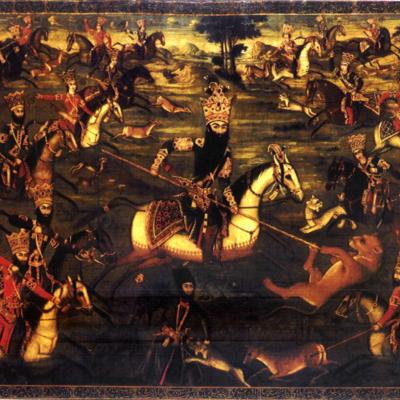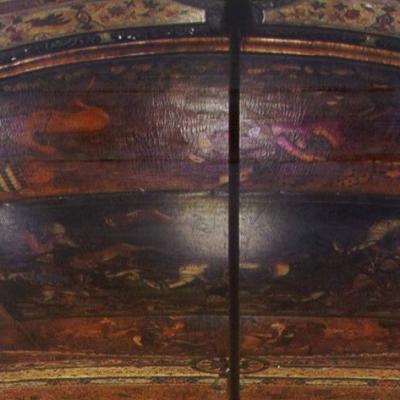Project at the President House
The project at President’s House was started by National Museum Conservation Laboratory and INTACH (Indian National Trust for Art and cultural Heritage), New Delhi in April 2003 which ended in March 2004. The paintings painted on a thick canvas are Qajar Paintings from Persia. All the nine panels, the largest of them being 12x18 feet, were dismantled from a 60 feet high ceiling followed by restoration work.
The detail of the central panel of the painting, a monumental group composition (3.56x 5.20 meters), was offered by Fath Ali Shah (regioned 1797-1834) to George IV of England (Reigned 1820-30). The painting was transferred in 1920 from the India office library, London, and installed on the ceiling of the State Ballroom of Viceroy’s House, during the viceroyalty of Lord Irvin. This is the Ashoka Hall of Rashtrapati Bhawan.
The Painting shows an equestrian portrait of Fath Shah hunting with twenty-two of his sons, all of them identified. This became the inspiration for the rest of the murals which now surround it. The central painting is the original ‘Qajar Painting’ made by Persian artists in 1820, and the rest of the panels surrounding it were later added in 1920.
These paintings were previously restored in London before they were transferred to the Rashtrapati Bhawan.
The restoration work included cleaning, removal of old restorations, consolidation of flaking paint, strip lining of the side panels and full lining of the central panel with Pedicryl (cold lining). The nylon cloth is used to line the central panel to reduce the sag, as the paintings are on the ceiling.

